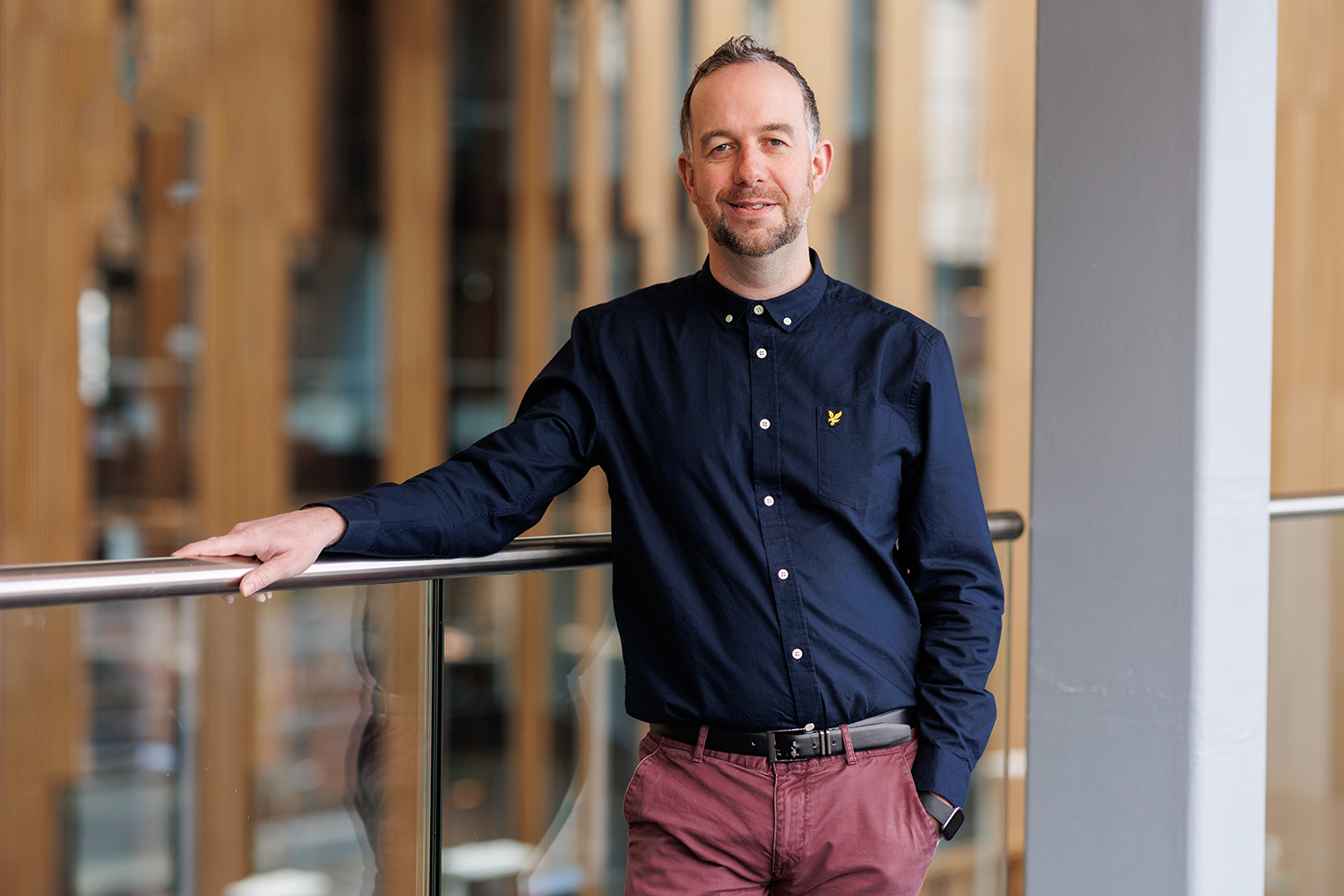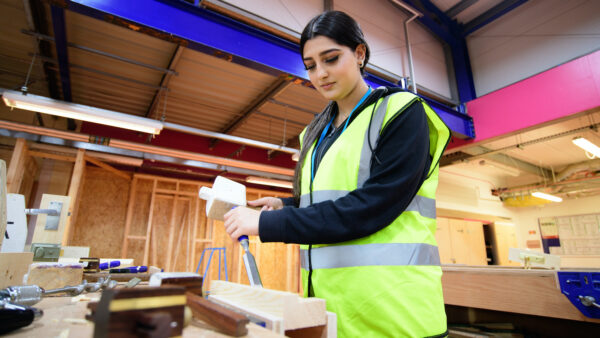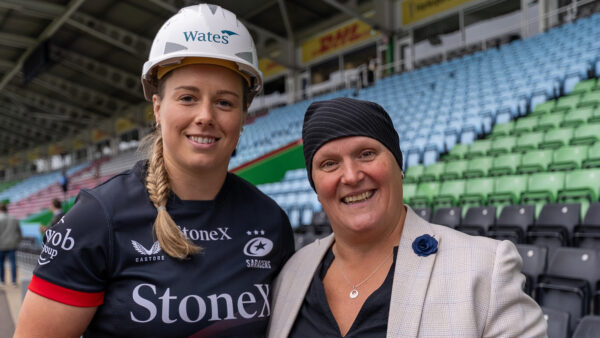
David Comiskey FCIOB, reader at Belfast School of Architecture & Built Environment at Ulster University, on the development of a virtual campus. By Nicky Roger.
What are you working on at present?
Most of my time of late has been spent working on our Ulster University Virtual Campus initiative, a project currently funded by the Department for the Economy in Northern Ireland.
This is a student-driven project, originating from undergraduate research, which uses a digital workflow to create immersive 3D virtual replicas of key spaces across all three Ulster University campus locations in Northern Ireland.
A particular focus has been placed on developing important spaces from an accessibility and wellbeing perspective. This work is important within the broader national trend of increasing numbers of students reporting having a mental health condition – and within a Northern Ireland context, where the number young people experiencing mood disorders is higher than in other parts of the UK. Virtual exploration before physically visiting campus locations helps prepare pupils for transition thus alleviating anxiety and raising aspirations.
The workflow involves the use of laser scanning technology to capture spaces which are then modelled or updated in Autodesk Revit software before high-quality visual and virtual reality (VR) outputs are developed, all hosted on a bespoke university webpage. While this workflow allows for outputs to be viewed in VR using high-end headsets, importantly, it supports the use of more affordable viewers, which is important for reach.
What is new about this research?
A range of existing options were explored. These included the use of static images, videos, 360-degree imagery and 3D space capture solutions. However, we wanted to be innovative in our thinking, predicting the likely expectations of the next generation of learners.
CV: David Comiskey FCIOB FCIAT
2023 to present Reader, Ulster University
2021 Certified Passive House consultant
2016-23 Senior lecturer, Ulster University
2017 National teaching fellow
2009-16 Lecturer, Ulster University
2006-09 Course director and lecturer in Architectural Technology, Southern
Regional College
This led the team to consider the possibilities around new learning environments and the metaverse concept, along with the opportunity for the gamification of spaces from the perspective of both learning and space familiarisation.
The outputs developed have not only fulfilled the main ambition of virtual exploration but also enabled this related work. Exploratory studies have included developing immersive 3D virtual meeting spaces, a game based on a Revit model output ‘Virtual Campus the Experience’ and a generative design plug-in which uses model outputs for space layout planning, determining optimum positioning within an educational space for students with specialist requirements.
The innovation of this project is its relative simplicity, using existing platforms and applying them within a workflow which is transferable.
Why is it important to the construction industry?
Firstly, it demonstrates an innovative and transferable approach to asset management, demonstrating how a client can take an as-built model and use it to help end users become familiar with new environments before physically visiting.
This can be done in several ways (via VR outputs, 3D virtual meeting spaces or gamification), depending on the intended building use and the end user demographic. Subtly, the project is also a reminder that individuals have differing needs, promoting a sense of empathy and helping to reinforce the positive work which has taken place around mental wellbeing in recent years.
The Ulster University Student Success Centre has purchased 1,000 VR viewers to distribute to incoming first-year students who have indicated a disability or neurodiversity, as well as those who experience heightened anxiety. These will play a crucial role in supporting their transition.
With this project being driven by built environment students, it develops some of the key skills we want to see from those entering the industry in terms of an innovative approach to problem-solving, creative thinking and sound digital literacy skills. It demonstrates, in a small way, the importance of social value via a desire to make a positive impact on the lives of others.
The importance of the project is evidenced by the recognition it has gained, recently winning the award for Digital Innovation in Asset Management at the Digital Construction Awards.
Where do you see related future opportunities?
Related work stemming from this project has highlighted the collaborative opportunities which exist between the built environment sector and the creative industries, especially around game design.
While the concept of gamification is not new to the built environment sector, the ability to bring model outputs into game engines in a relatively seamless manner creates additional opportunities for exploration.
To exploit this, collaboration between the built environment and creative industries is important, and indeed is already taking place in some organisations.
At Ulster, we are encouraging such collaboration, and have developed the Digital laBorAtory initiative , which is aimed at developing digital literacy skills for students including a collaborative activity focused on gamification.

To visit the Virtual Campus webpage and experience the spaces please scan the QR code.
If you’re interested in academic membership visit www.ciob.org/membership/become-a-member/educator.









